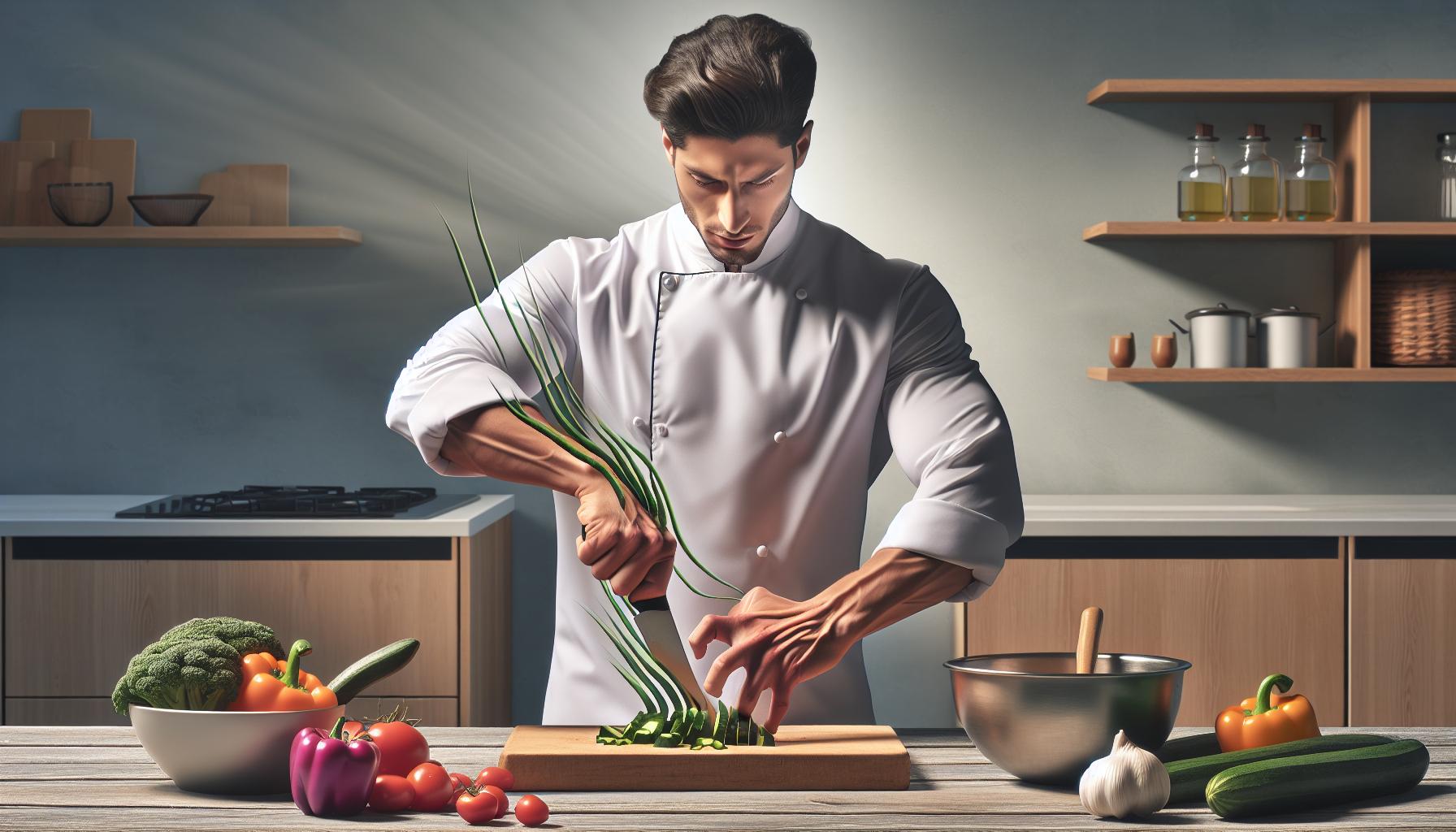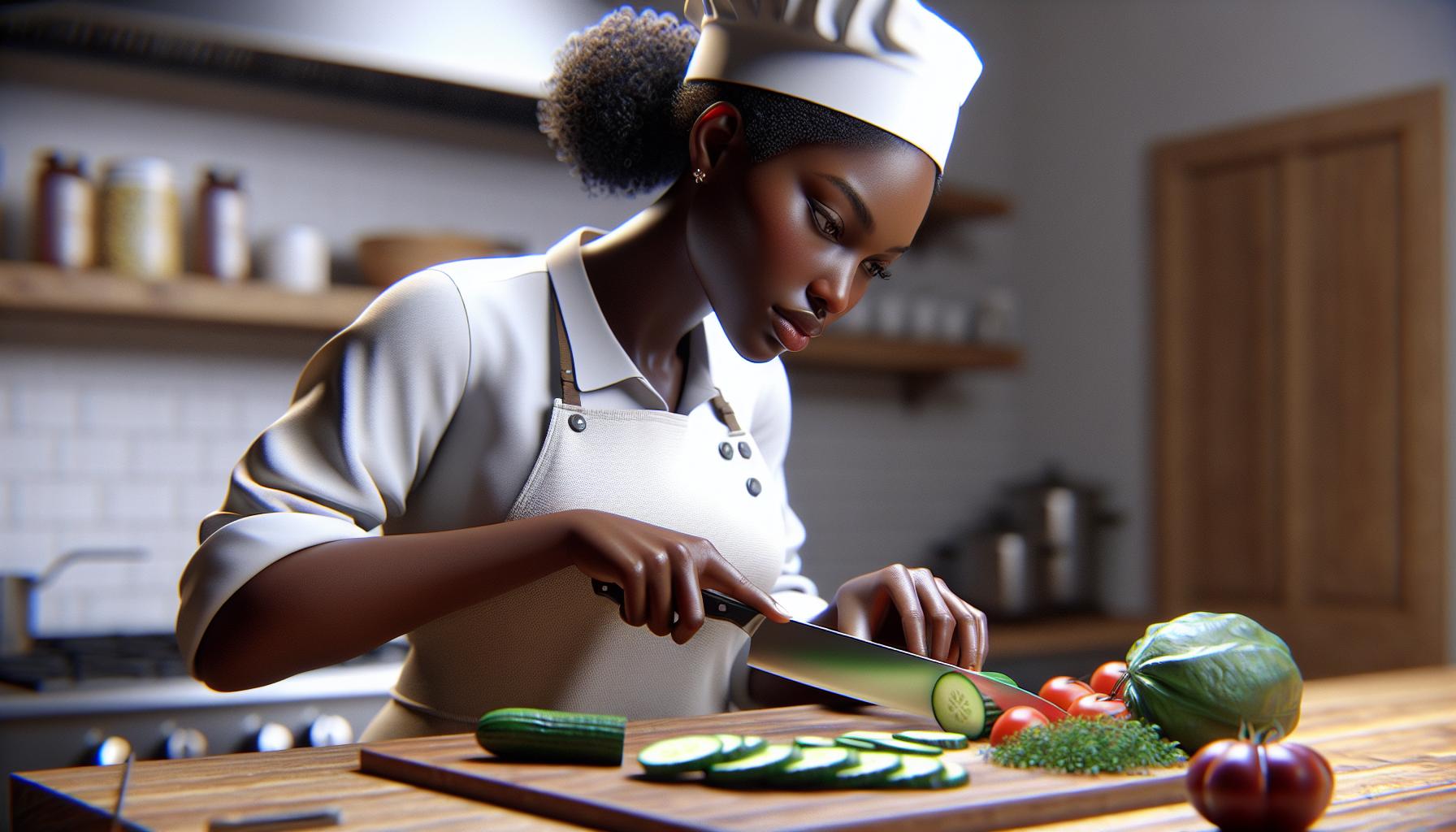Mastering knife skills isn’t just about looking cool in the kitchen – it’s the foundation of becoming a better cook. From perfectly diced onions to precisely julienned carrots proper cutting techniques for cooking can transform ordinary ingredients into culinary masterpieces. Plus they’ll help keep all ten fingers exactly where they belong!
Whether you’re a kitchen novice or an aspiring chef understanding basic cutting techniques for cooking will save time make cooking more enjoyable and elevate the presentation of every dish. The right knife skills don’t just make food look better – they ensure even cooking consistency in texture and ultimately better-tasting meals. Let’s slice and dice our way through the essential cutting techniques for cooking that’ll turn kitchen chaos into culinary confidence.
Cutting Techniques for Cooking
A well-equipped kitchen requires specific knives for different cutting tasks. Each knife type serves distinct purposes based on its design, size and blade characteristics.
Chef’s Knife
The chef’s knife functions as the primary all-purpose cutting tool in professional kitchens. Its 8-inch blade features a curved edge that enables a rocking motion for efficient chopping vegetables, dicing herbs and mincing garlic. The wide blade surface lifts ingredients easily after cutting while the pointed tip provides precision for detailed work. Professional chefs use this knife for 90% of cutting tasks including:
- Breaking down large cuts of meat into portions
- Creating uniform vegetable cuts like batons carrots
- Chopping dense ingredients such as potatoes onions
- Slicing herbs into fine ribbons (chiffonade)
Paring Knife
A paring knife measures 3-4 inches with a short pointed blade ideal for intricate cutting work. The compact size offers enhanced control for detailed tasks that require precision. Common applications include:
- Peeling fruits vegetables
- Deveining shrimp
- Removing seeds from peppers
- Creating garnishes from citrus peels
- Trimming excess fat from meat
- Slicing crusty bread loaves
- Cutting ripe tomatoes
- Portioning layer cakes
- Slicing citrus fruits
- Breaking down melons pineapples
Basic Knife Grip and Safety Tips

Mastering proper knife grip techniques enhances control while reducing the risk of accidents in the kitchen. A secure grip combined with correct hand positioning creates a stable foundation for all cutting tasks.
The Professional Pinch Grip
The professional pinch grip positions the thumb and index finger on opposite sides of the blade near the handle. The thumb rests on one side of the blade while the index finger pinches the opposite side creating a triangular grip point. The remaining three fingers wrap around the handle maintaining steady control. This grip maximizes control precision stability during complex cuts like dicing julienning mincing. Professional chefs utilize this method because it provides enhanced maneuverability superior balance optimal force distribution.
Proper Hand Position
The non-cutting hand forms a claw shape with fingers tucked under protecting fingertips from the blade. The knuckles guide the knife blade maintaining consistent cutting thickness control. The wrist stays level with the cutting board minimizing strain during extended prep work. The elbow remains close to the body creating a stable cutting motion parallel to the board. This hand position enables smooth continuous cutting movements while safeguarding against accidental cuts nicks slices.
Foundational Cutting Techniques

Mastering three essential cutting techniques creates the foundation for advanced knife skills in the kitchen. These fundamental methods establish precise control for consistent results across various ingredients.
The Slice
Slicing involves drawing the knife through food in one fluid motion from tip to heel. The technique produces long uniform cuts perfect for vegetables like cucumbers carrots tomatoes. Expert chefs maintain a 20-degree blade angle while keeping the knife tip in contact with the cutting board throughout the motion. Common slice variations include:
- Cross-slice: Cuts perpendicular to the length of ingredients
- Diagonal-slice: Angled cuts creating oval shapes
- Paper-thin slice: Delicate cuts less than 1/8 inch thick
- Bias slice: 45-degree angle cuts maximizing surface area
The Chop
Chopping utilizes an up-down motion with the knife blade to create rough irregular pieces. The technique focuses on speed efficiency rather than uniform sizes. Professional kitchens employ these chopping methods:
- Rock chop: Pivoting the knife blade while keeping the tip down
- Cross chop: Multiple passes in different directions
- Tap chop: Quick repetitive blade taps for herbs
- Push chop: Forward pushing motion splitting ingredients
The Dice
Dicing produces uniform square cuts essential for even cooking presentation. The technique requires three precise steps:
- Horizontal cuts parallel to the cutting board
- Vertical cuts following ingredient length
- Cross cuts creating equal-sized cubes
| Size | Dimensions |
|---|---|
| Large | 3/4 inch |
| Medium | 1/2 inch |
| Small | 1/4 inch |
| Brunoise | 1/8 inch |
Advanced Cutting Methods

Advanced cutting techniques enhance dish presentation through precise knife skills that create uniform shapes. These methods build upon basic knife skills to deliver professional-quality results.
Julienne and Batonnet
Julienne cuts create thin matchstick-shaped strips measuring 1/8 inch by 1/8 inch by 2-3 inches. The cutting process starts with squaring off the ingredient’s sides to form a rectangular block. Batonnet cuts follow the same principle but produce larger strips measuring 1/4 inch by 1/4 inch by 2-3 inches. Common ingredients for these cuts include carrots, celery, zucchini for stir-fries or garnishes. Professional chefs use these cuts to ensure even cooking times in dishes like Asian-style salads or vegetable medleys.
Chiffonade
Chiffonade produces delicate ribbons of leafy greens or herbs by stacking multiple leaves together. The technique begins by removing stems from leaves such as basil, mint or spinach. Rolling the stacked leaves tightly creates a cigar-like shape for precise cutting. Sharp cross-cuts at 1/8-inch intervals yield fine ribbons perfect for garnishing soups, salads or entrees. This method prevents bruising of delicate herbs while creating an elegant presentation.
Brunoise
Brunoise cuts create tiny cubes measuring 1/8 inch on all sides from julienned vegetables. The technique requires first cutting ingredients into julienne strips then rotating them 90 degrees. Precise cross-cuts transform the strips into uniform cubes essential for professional-quality soups, sauces or garnishes. Common ingredients include shallots, carrots, celery for mirepoix or bell peppers for sauces. The uniformity ensures consistent cooking times across all pieces.
Specialized Techniques for Different Foods
Different food categories require specific cutting approaches to maximize flavor presentation. Each technique emphasizes precision efficiency while maintaining food safety standards.
Meat and Poultry Cutting
Professional meat cutting starts with identifying the muscle grain direction. The butcher’s cut method separates large cuts into manageable portions by locating natural muscle seams. A sharp boning knife removes silver skin connective tissue using shallow angled strokes. Butterflying creates an even thickness in chicken breasts by slicing horizontally through the middle. Frenching lamb racks exposes clean bones by removing meat between the ribs. Cross-cutting against the grain produces tender slices in tough cuts like flank steak brisket. Cubing meat requires 1-inch uniform cuts for even cooking in stews curries.
Fish Filleting
Fish filleting begins with scaling using firm backward strokes with a scaling tool. The initial cut starts behind the gills continuing along the backbone to separate fillets. Sharp flexible fillet knives remove pin bones without damaging surrounding flesh. Skinning requires angling the blade between flesh skin while pulling firmly. Portioning creates equal-sized cuts by measuring thickness at the thickest point. Making shallow incisions in thick fillets ensures even cooking prevents curling. Trimming away dark meat near the lateral line improves flavor presentation.
Fruit and Vegetable Prep
Precise fruit vegetable cutting enhances visual appeal cooking consistency. Segmenting citrus involves removing pith membranes to extract clean segments. Hulling strawberries removes the green cap stem without wasting fruit flesh. Coring apples pears uses a curved paring knife to extract the seed cavity. Scoring vegetables creates shallow cuts that allow marinades to penetrate. Diagonal cuts increase surface area for stir-frying absorption of flavors. Removing eyes from pineapples requires angled cuts following the spiral pattern. Tournament turning creates uniform barrel shapes in root vegetables for classical French presentations.
Maintaining Your Knife Skills
Consistent practice creates muscle memory for efficient cutting techniques. Regular maintenance of knife skills enhances cooking precision while reducing preparation time.
Practice Exercises
- Execute 100 precision cuts on carrots daily to master uniform slicing
- Create diagonal cuts on celery stalks at 45-degree angles for technique refinement
- Practice brunoise cuts on onions starting with 1/4-inch dice progressing to 1/8-inch
- Perform julienne cuts on bell peppers focusing on maintaining 1/8-inch width
- Master the rocking motion with herbs using a chef’s knife for fine mincing
- Perfect the claw grip technique using cucumbers for repetitive straight cuts
- Transform potatoes into consistent 1-inch cubes to improve speed control
- Execute chiffonade cuts on leafy greens starting with larger leaves
- Gripping the knife handle too tightly creates hand fatigue
- Using dull blades increases slip risks during cutting
- Placing fingers beyond the blade guide risks cuts
- Rushing through precise cuts produces uneven results
- Cutting ingredients at inconsistent angles affects cooking time
- Failing to maintain proper knife angle reduces cutting efficiency
- Working with unstable cutting boards creates safety hazards
- Neglecting to keep knife blade parallel to cutting surface
- Using incorrect knife sizes for specific tasks hampers precision
- Forgetting to anchor cutting boards with damp towels underneath
Transforming Cooking Into Culinary Excellence
Mastering cutting techniques transforms ordinary cooking into culinary excellence. A well-trained hand with proper knife skills not only ensures safety in the kitchen but also elevates the quality and presentation of every dish.
Armed with the right knowledge of knife types specialized techniques and safety practices any home cook can achieve professional-level results. Regular practice and attention to proper form will develop the muscle memory needed for efficient and precise cutting.
These essential skills serve as the foundation for a lifetime of confident and creative cooking. Whether preparing a simple family dinner or an elaborate feast proper cutting techniques will always be a chef’s most valuable asset.

